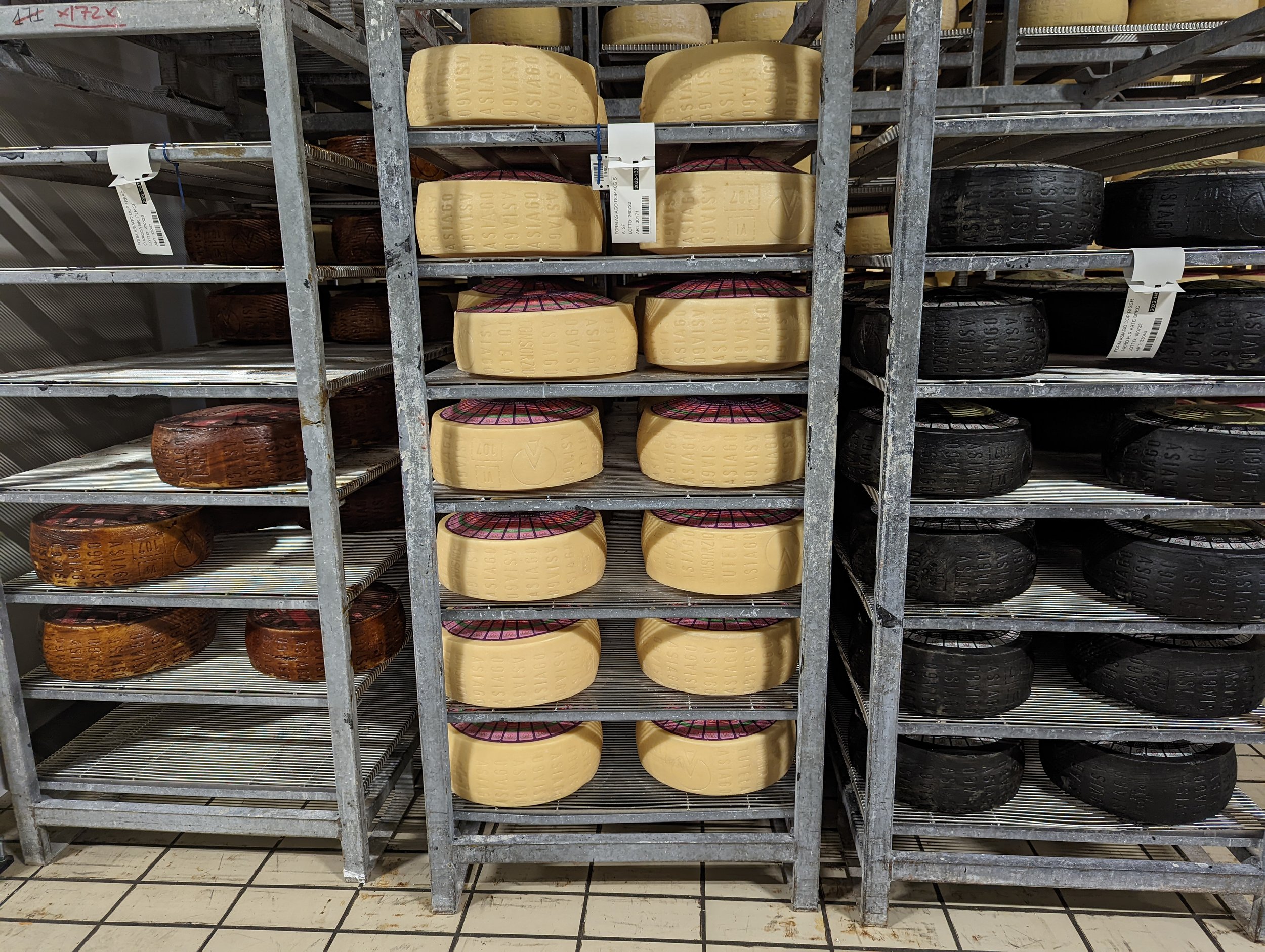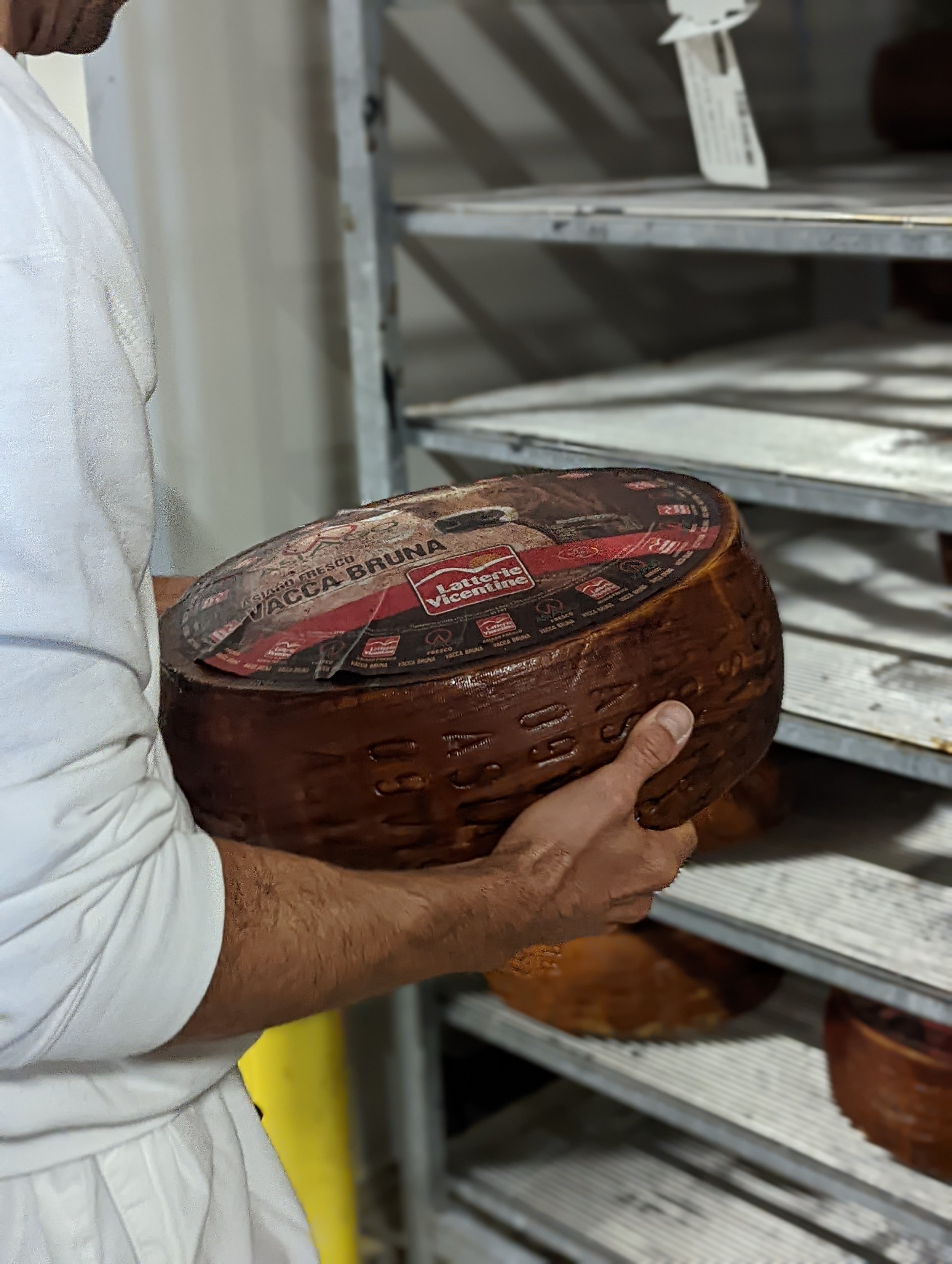4 Reasons Why Asiago DOP is More than a Cheese for Bagels
“Asiago Bagel” by orijinal is licensed under CC BY 2.0.
Like many cheeses, Asiago isn’t a singular thing, and can showcase different characteristics of texture, flavor, and color based on a number of different approaches to its make. In fact, the PDO offers a staggering 9 different options reflecting different rennet, age and region. Even the fact that it’s made from cow’s milk shouldn’t be taken for granted.
While Asiago is one of the most widely recognized cheese names in the U.S. it is perhaps the least understood. This is due, I believe, with its having become synonymous with bagels during the Einstein Bros./Bruegger’s/Panera boom in the 1990s. Now, baking cheese into bread dough is certainly nothing to apologize for, (on the contrary, it’s obviously something to celebrate,) but in the case of Asiago, it may have obscured the character of the cheese itself for anyone who encountered it solely in its bagel application. Soft or hard? White or yellow? Granular or creamy? Asiago’s introduction via bagels, breadsticks, or other baked goods left us wondering what this suddenly ubiquitous cheese was all about, other than “probably Italian,” and maybe, “kinda savory.” Was it just a less syllabic, less expensive Parmigiano-Reggiano alternative?
Here are 4 things you should know about Asiago, toward a better understanding of one of America’s favorite baked-in cheeses.
Asiago is a Mountain Cheese
Asiago photo by Stefano Segato on Unsplash
As with many European foodstuffs, Asiago is named for its originating town, located on a mountainous plateau in the Veneto region of Northeastern Italy. Like other Italian cheeses from this area (such as Piave), it is often classified as an Alpine-style cheese, the Dolomite range here simply being the Italian name for the stretch of Alps that separate Italy from Austria in Italy’s northeast quadrant. The production area of Asiago is restricted to a clearly defined region, in accordance with its Asiago DOP designation, so true Italian Asiago is never not a mountain-based cheese. Certain productions of Asiago, those whose cattle have been raised and whose resulting cheese is both produced and matured above 600 meters above sea level, are also empowered to label their cheeses “Product of the Mountains,” just to really drive the point home.
Unlike the most famous Alpine expressions such as Gruyere, Comte, and Appenzeller, however, Asiago is not a washed-rind cheese, though it does share a cooked- or semi-cooked- curd pedigree, making it an excellent melter.
Asiago is an Ancient Cheese
Making Asiago
The making of a cheese called Asiago is believed to have originated on the Asiago plateau in the 10th century, however sheep would have been the herd of choice for its earliest version. (Mountainous conditions and wool production would seem to go hand-in-hand.) It wasn’t until the 1700s, along with developments in farming and animal husbandry, that cow’s milk became the primary resource for the production of Asiago cheese, and it started to resemble the version we now know. In either case, Asiago has been around for centuries before we thought to start applying it to bagels.
Asiago Comes in Varying Expressions
Different Asiago DOP
Unlike its more famous Northern Italian cousin, Parmigiano-Reggiano, which goes from very aged to more aged, Asiago has several expressions of varying ages and conditions that all fall under the name Asiago. The two most popular types are Asiago Fresco and Asiago Stagionato.
Asiago Fresco (or Pressato) is aged for only between 20-40 days. (In the U.S. then, Asiago Fresco will be pasteurized, but it is often produced with raw milk in Italy.) As a cooked curd cheese it maintains a great elasticity, and a creamy, buttery texture, exhibiting eyes or holes of varying size throughout its paste.
Asiago DOP Vacca Bruna
One Fresco variation, Asiago Fresco Vacca Bruna is made only with the milk of a particular species of cow. Its flavor is frequently described as tangy or buttery, and often more complex than other young cheeses of a similar nature.
Asiago d’Allevo or Asiago Stagionato, meaning “seasoned,” is an older expression of the cheese, with a more granular texture due to its semi-skimmed milk condition and resulting curd formation, and which becomes firmer as it ages up to 4 months. Beyond Stagionato, Asiago is also available in Mezzano, Vecchio, and Stravecchio versions, each requiring additional months of aging. (As it continues to age, try to find a tasting note that doesn’t include the word “pineapple,” which would seem to be aged Asiago’s flavor calling card.) Additionally, various Asiagos may be dipped in wax or not to finish.
Asiago Has Imposters
Asiago has name protection in the EU, but sadly, like Gruyere, lost the battle in the US to trademark the name Asiago for use only in cheeses that come from the Asiago plateau. Asiago became a cheese name that was also commonly used in the US due to an influx of Italian immigrants in the early part of the 1900s, who brought recipes and techniques with them. Always look for the Asiago DOP designation to make sure you’re getting the real thing. Learn more about geographic designation of origin cheeses.





